How Antarctic bases went from
wooden huts to sci-fi chic
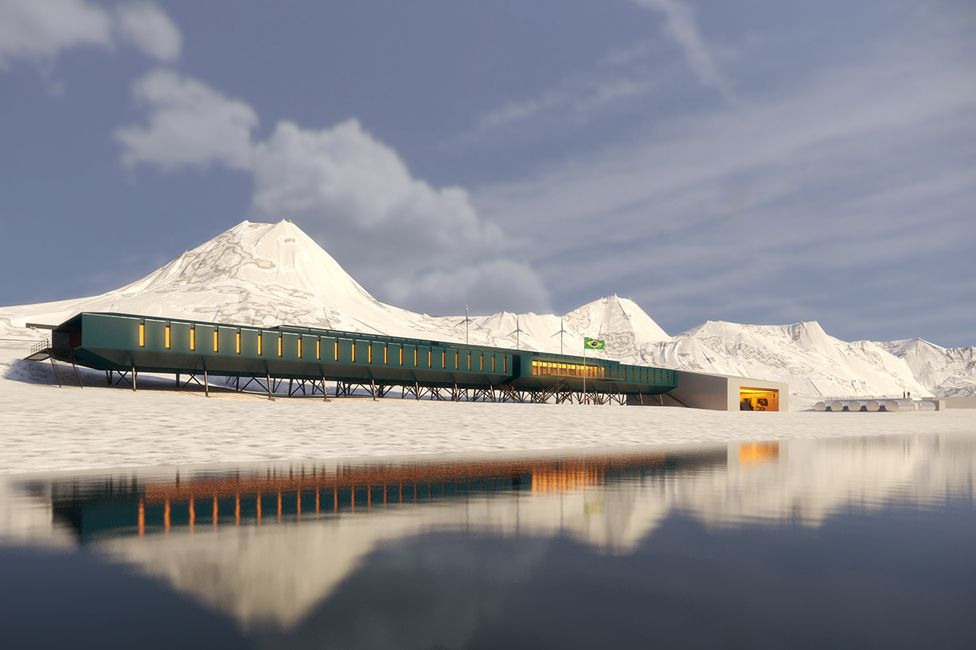 ESTÚDIO 41 / AFACONSULT
ESTÚDIO 41 / AFACONSULT
How do you build in the most isolated place on Earth? For decades Antarctica - the only continent with no indigenous population - hosted only the simplest huts as human shelters. But, as Matthew Teller finds out, architecture in the coldest, driest, windiest reaches of our planet is getting snazzier.
It's an eye-popping, futuristic design - a dark, sleek building, low and long, that is destined to be a temporary waterfront home for up to 65 people at a time.
The price tag is a hefty $100m (£80m). And while a Chinese company is building it, it's not in China, and almost no-one will ever see it.
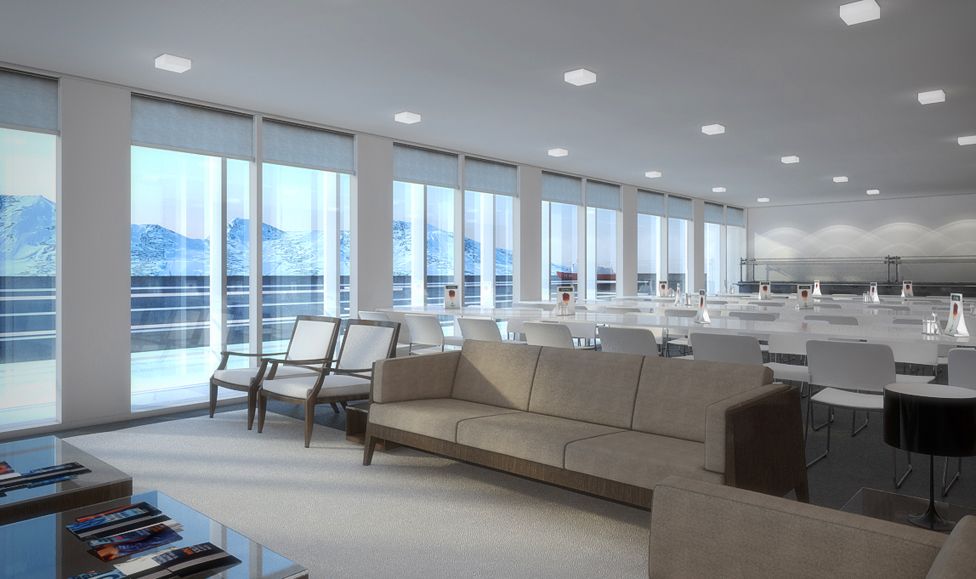 ESTUDIO 41 ARQUITETURA
ESTUDIO 41 ARQUITETURA
Welcome to Brazil's Comandante Ferraz Antarctic research station.
After the original burned down in 2012, the Brazilian navy launched an architectural competition for a replacement design - won by a local firm - and then awarded the building tender to a Chinese defence and engineering contractor, CEIEC. It's due to be completed in 2018.
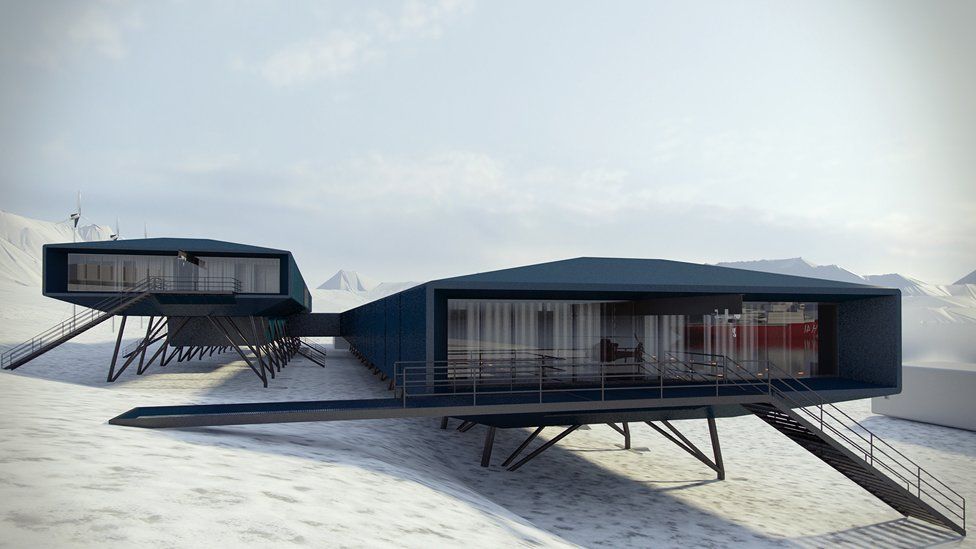 ESTÚDIO 41/AFACONSULT
ESTÚDIO 41/AFACONSULT
Located on a small island just off the coast of Antarctica, it lies almost 1,000km (600 miles) south of the tip of South America. No scheduled air routes come close and it's way off any shipping lanes.
And even if you could reach it yourself, like all Antarctic research stations Comandante Ferraz will be closed to the public. Virtually nobody other than the crews posted there will ever see it in the flesh. So why, you may ask, spend so much on architectural style? Wouldn't a dull but functional building do just as well?
Brazil is not alone in paying for eye-catching design, though.
In 2013, India unveiled its Bharati station, with a similar modernist design.
 IMS / BOF
IMS / BOF
It was made from 134 prefabricated shipping containers, for ease of transport and construction, but you would never guess it from the outside.
 NCAOR
NCAOR
And the following year, South Korea opened its Jang Bogo station - a grand, triple-winged module lifted on steel-reinforced blocks, capable of supporting a crew of 60.
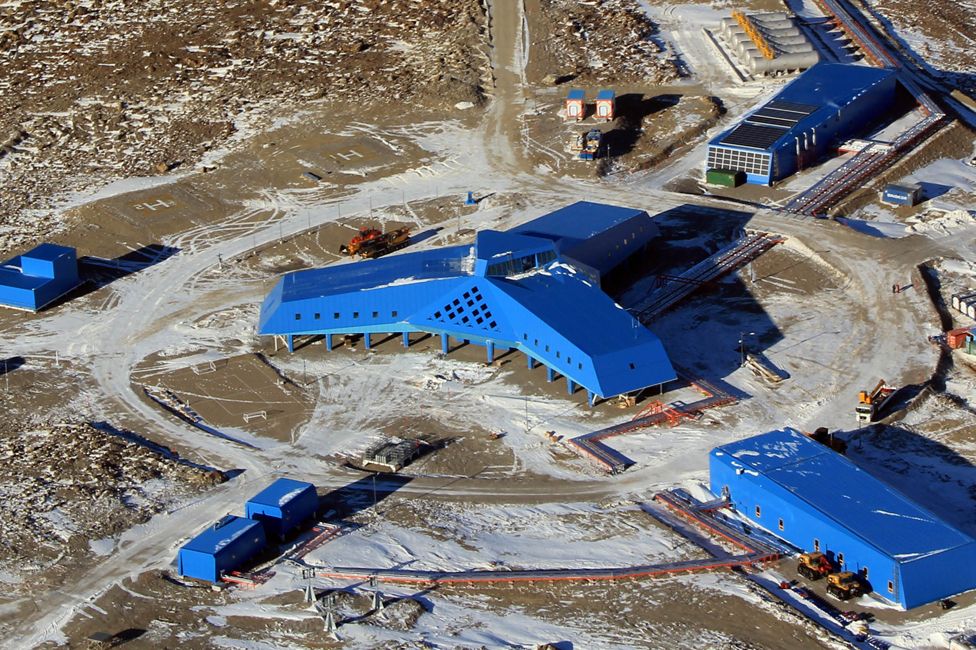 EPA
EPA
What is the explanation for this architectural flamboyance?
"Antarctic stations have become the equivalent of embassies on the ice," says Prof Anne-Marie Brady, editor-in-chief of the Polar Journal and author of China as a Polar Great Power.
"They are showcases for a nation's interests in Antarctica - status symbols."
Those interests could be purely scientific. But a moratorium on mineral prospecting runs out in just over 40 years' time, and every Antarctic player also wants to be ready to take advantage, should it not be extended.
Planting a dramatic building on the ice has become the modern equivalent of explorers of old planting a flag.
It wasn't always like this.
In March 1903, the 33 men of the Scottish National Antarctic Expedition landed on the outlying South Orkney Islands and built a dry-stone shack.
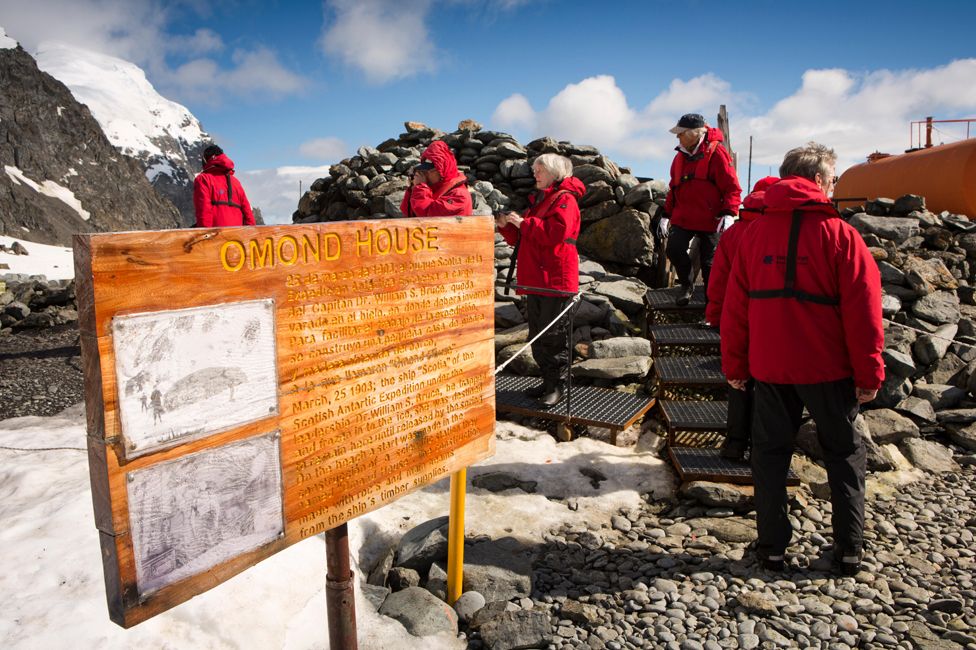 ALAMY
ALAMY
Expedition leader William Bruce grandly named it Omond House, after the Edinburgh meteorologist, Robert Traill Omond. It was Antarctica's first permanent building, and is maintained today by the Argentine government as part of its Orcadas base.
For years afterwards, throughout the heroic age of polar exploration headed by Amundsen, Scott, Shackleton and Mawson, nothing much fancier than wooden huts went up on the white continent.
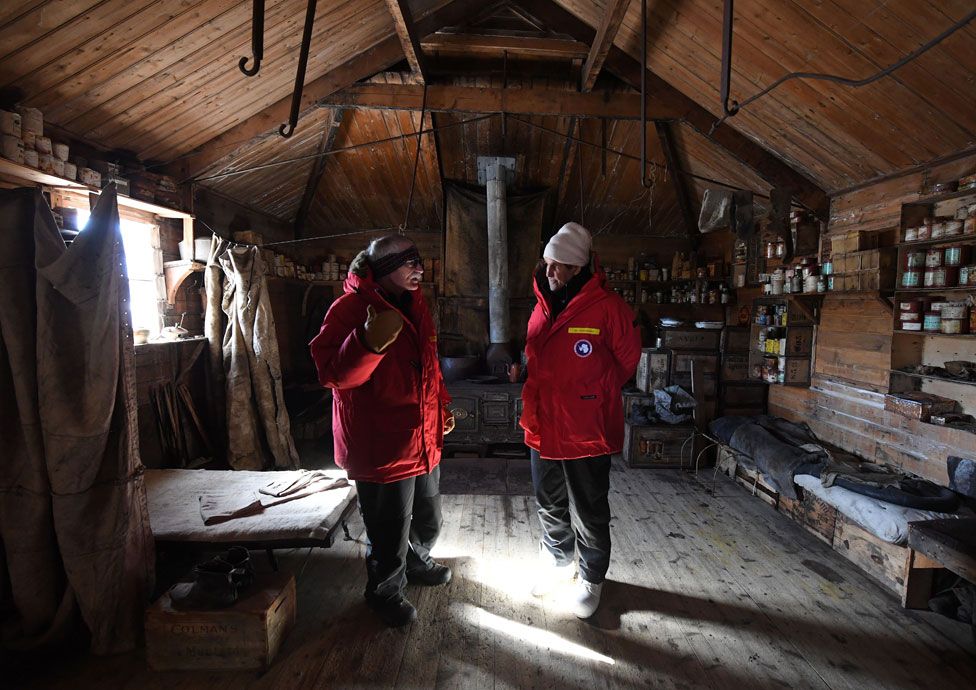 AFP
AFP
Then came a - relative - building boom, spurred by the International Geophysical Year (IGY) of 1957-58, a global project for co-operation in science. The 1959 Antarctic Treaty, which resulted from the IGY, suspended all territorial claims, but that led many countries to set about consolidating their presence in other ways, such as construction.
The treaty's clause giving countries conducting "substantial research activity" in Antarctica a vote in meetings to determine the continent's future was another incentive to maintain a physical presence.
The US's sprawling McMurdo research station dates from this period. Powered from 1962 to 1972 by a nuclear reactor, it is the biggest settlement on the continent, housing a summer population of about 1,200.
 GETTY IMAGES
GETTY IMAGES
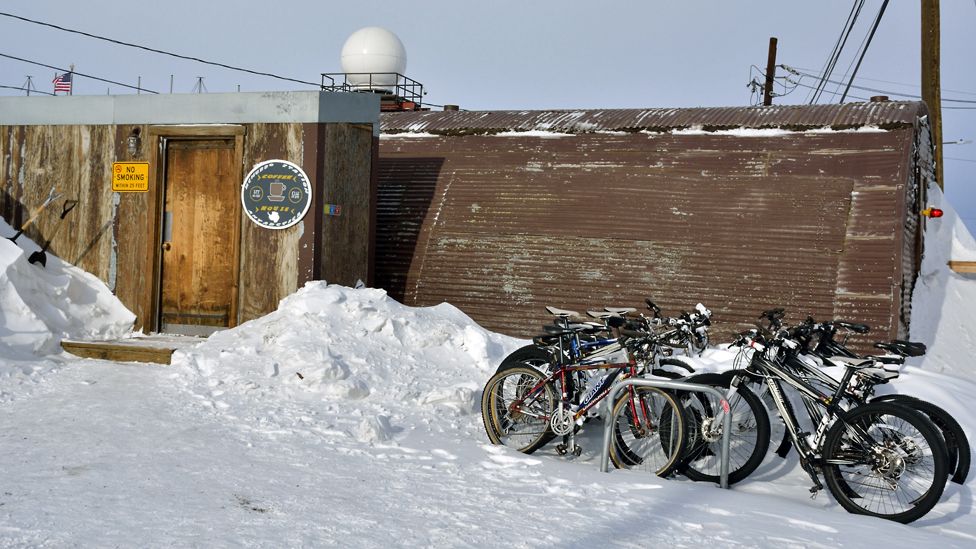 PETER REJECK, NSF
PETER REJECK, NSF
For years, though, what with the huge technical and logistical difficulties in building anything in Antarctica, architectural glamour stayed off the list of priorities.
The UK's Halley station was just "a few wooden huts inside giant steel tubes" when meteorologist Peter Gibbs arrived in 1980. It lay buried beneath 15m (50ft) of snow.
"It was like living in a submarine, clambering up and down ladders to get in and out," Gibbs remembers.
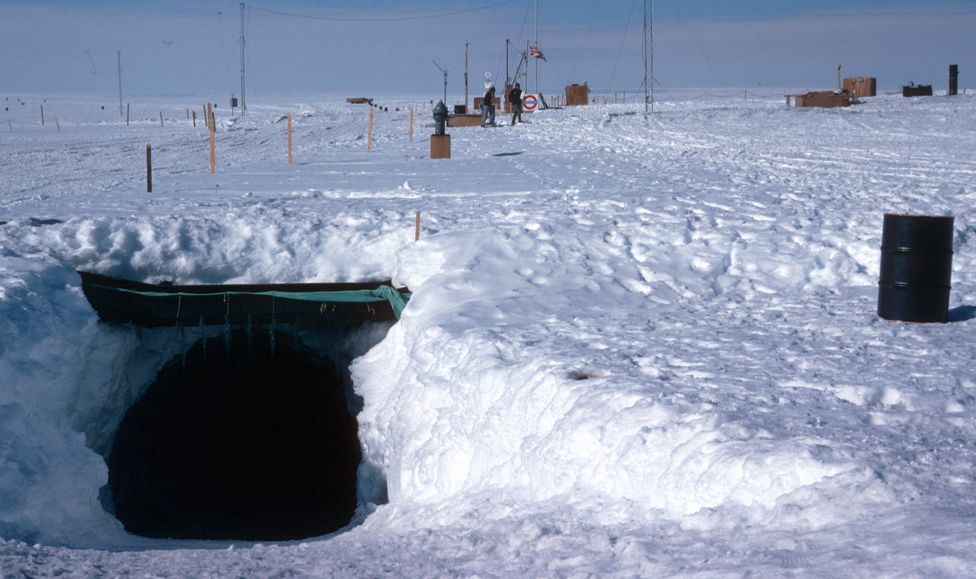 BRITISH ANTARCTIC SURVEY
BRITISH ANTARCTIC SURVEY
Antarctica as a whole has so little precipitation it is classified as a desert, but snow does fall near the coasts, and in the interior low temperatures mean fallen snow accumulates faster than it can melt. Polar winds blow this snow around the continent, so that any object standing proud of the flat surface quickly gains a downwind "tail" of blown snow. Snow accumulation can swamp and crush buildings with ease.
The first Halley station, built in 1956, was abandoned 12 years later, when it too had become "like a submarine", as Gibbs puts it.
The version he worked in, Halley III, was built in 1973 and lasted only 10 years. Until Halley VI arrived in 2013, all were defeated by snow accumulation, and by the moving ice shelf on which they stood. At Halley's location the ice slides around 1.5m (5ft) a day towards the sea, but to maintain accuracy the station's scientific measurements have to be made at the same place year by year.
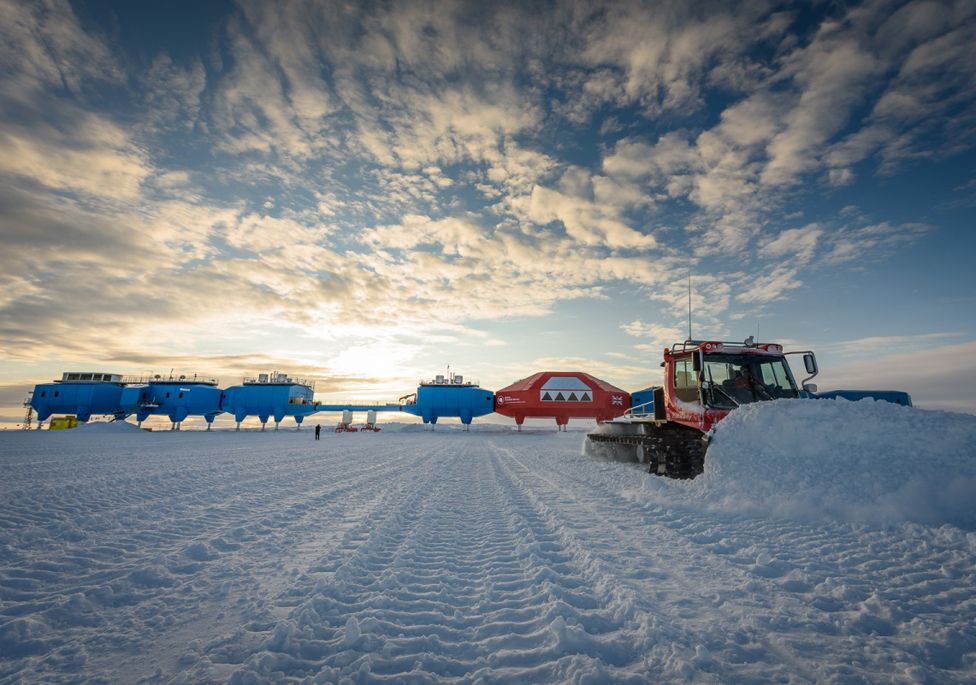 MICHAL KRZYSZTOFOWICZ
MICHAL KRZYSZTOFOWICZ
Halley VI, however, is Antarctica's first relocatable research station. Its eight connected pods - like giant, colourful train carriages, which can be isolated to limit the spread of fire - sit on hydraulic legs mounted on huge, 8m-long skis. This means that the pods can be detached from each other, dragged by bulldozers to a new location, and the whole station reassembled.
That design is being put to good use, as Halley is currently being moved to avoid a chasm that is opening up in the ice nearby.
And Halley VI is both glamorous and comfortable.
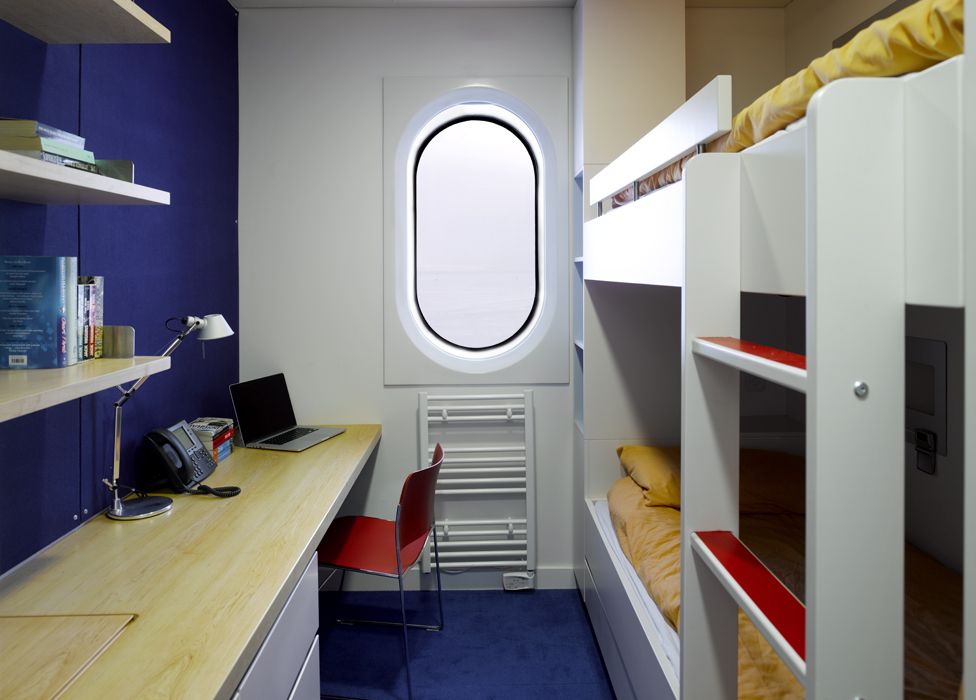 JAMES MORRIS
JAMES MORRIS
Its bijou bedrooms feel like a classy budget hotel. Interiors are fitted in vivid reds, blues and greens to compensate for the lack of colour outside. Halley's pool table and sofas sit beneath the only double-height internal space in Antarctica, stylishly lit - outside the months of winter darkness, anyway - by tall, semi-opaque windows. Beside the drinks bar climbs a spiral staircase, clad in aromatic Lebanese cedar veneer, chosen to stimulate an often-overlooked sense in the almost completely smell-free Antarctic environment.

"All the newest bases look good as well as do the science - it's a reflection of the priorities of our era," says Anne-Marie Brady.
South Africa was one of the first countries to solve the problem of snow accumulation with its SANAE IV base, which opened in 1997. It was designed with stilt-like legs, which let snow blow under the building.
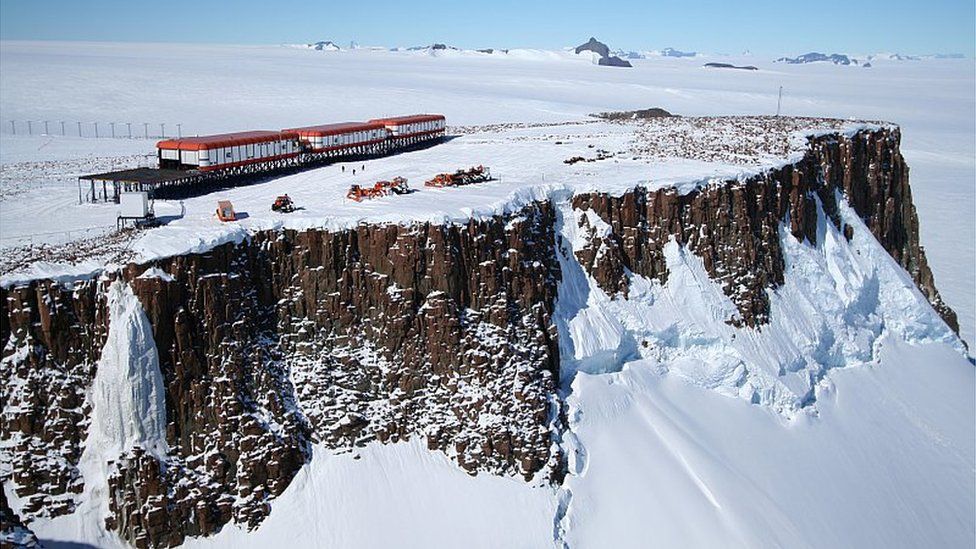 DR ROSS HOFMEYR
DR ROSS HOFMEYR
Germany applied the same concept to its Neumayer III base, which opened in 2009, with an extra refinement. Sixteen hydraulic pillars allow the entire two-storey structure to be raised every year by around a metre. The foot of each pillar is then lifted and replaced on a new firm base of packed snow.
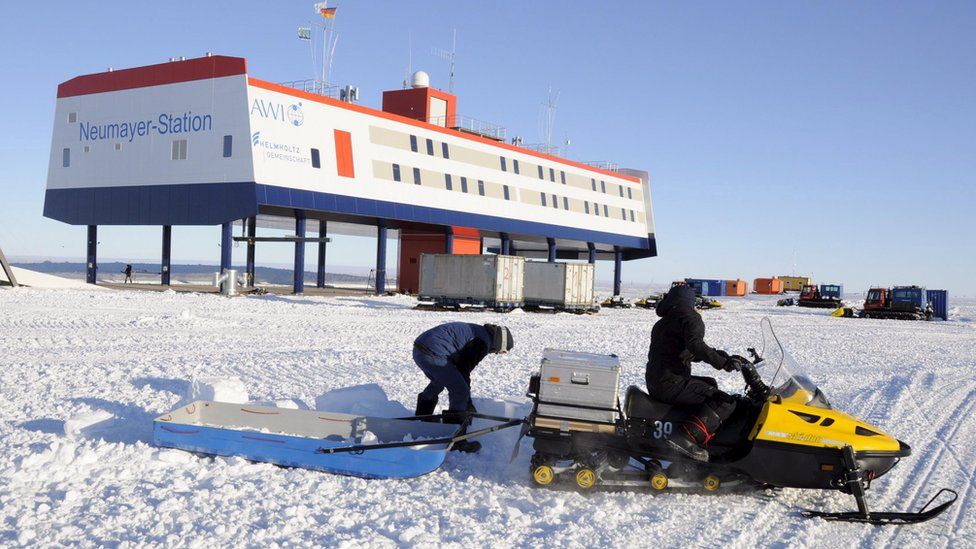 EPA
EPA
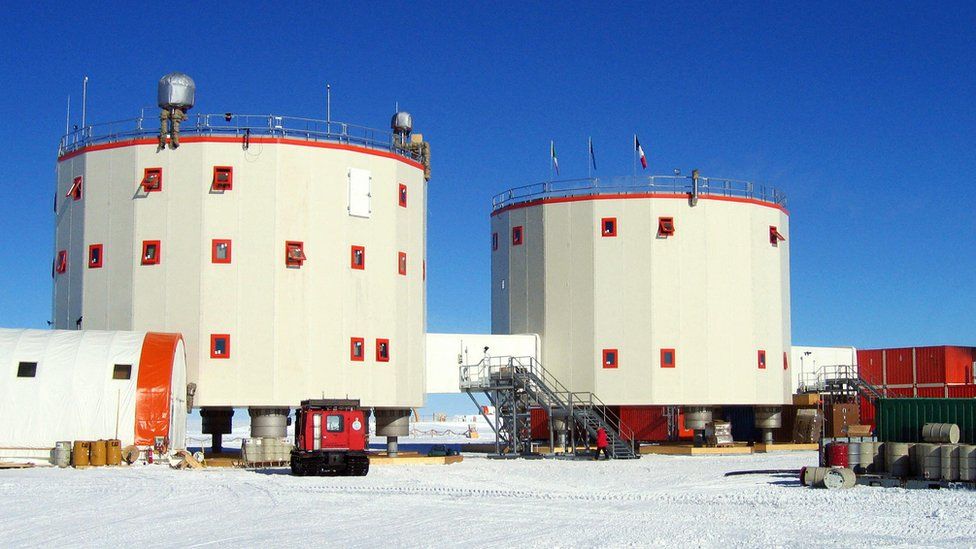 AFP/GETTY
AFP/GETTY
Another element of Antarctic architecture that has become critical is energy efficiency. Most stations run on polar diesel, which is expensive, polluting and difficult to transport. Belgium's Princess Elisabeth station, an aerodynamic pod raised on steel legs, is the first with zero emissions.
Since its inauguration in 2009 it has run entirely on solar and wind energy, and - even here - has no heating. The station's layered design means interior temperatures are maintained from waste heat generated by electrical systems and human activity, and dense wall insulation reduces heat loss to almost zero.
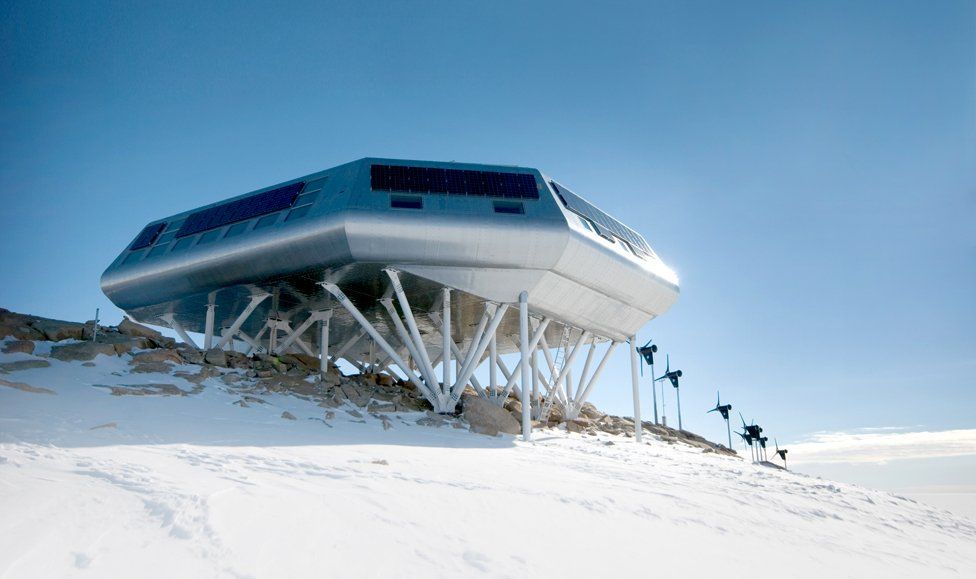 INTERNATIONAL POLAR FOUNDATION, RENE ROBERT
INTERNATIONAL POLAR FOUNDATION, RENE ROBERT
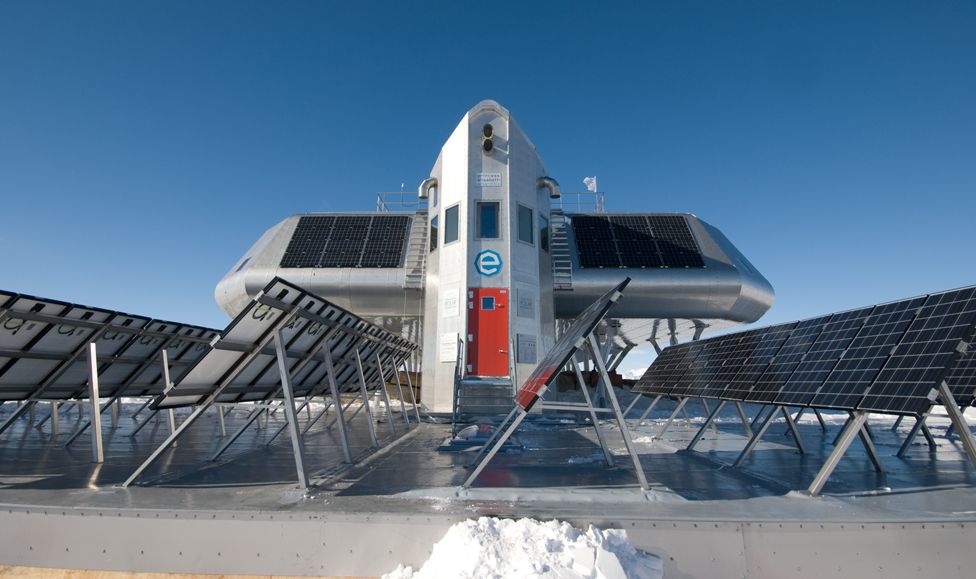 INTERNATIONAL POLAR FOUNDATION, RENÉ ROBERT
INTERNATIONAL POLAR FOUNDATION, RENÉ ROBERT
If the Princess Elisabeth station looks like something out of a Bond movie, China's latest Antarctic station Taishan - its fourth - has been likened to a flying saucer. It was rush-built in 45 days in 2013-14, and is intended to last only a few years.
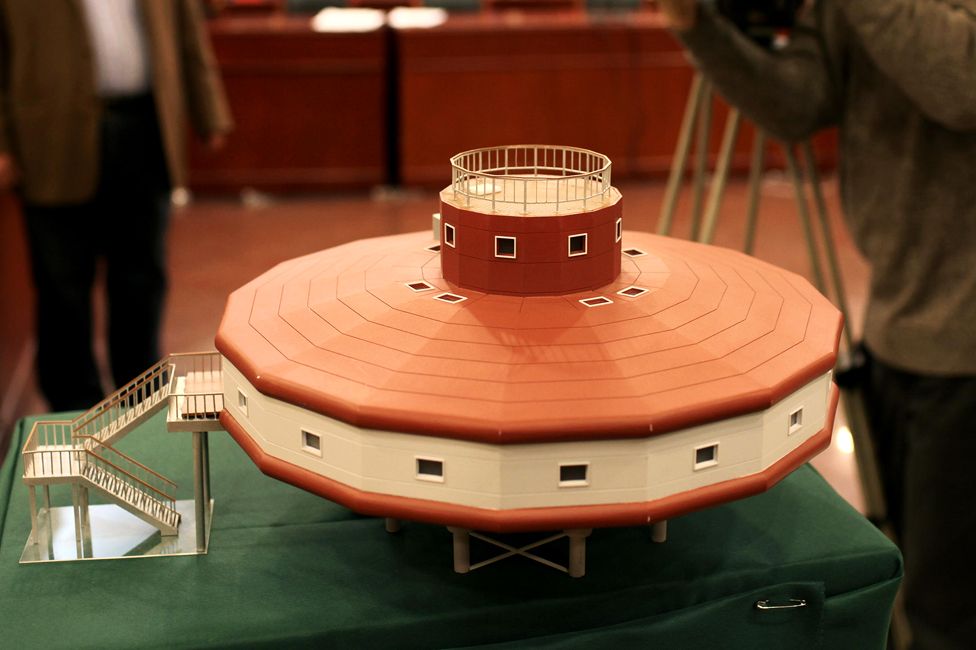 ALAMY
ALAMY
"China will probably start building a fifth station this year," says Anne-Marie Brady.
Like all the rest, few people will ever see it.
No comments:
Post a Comment